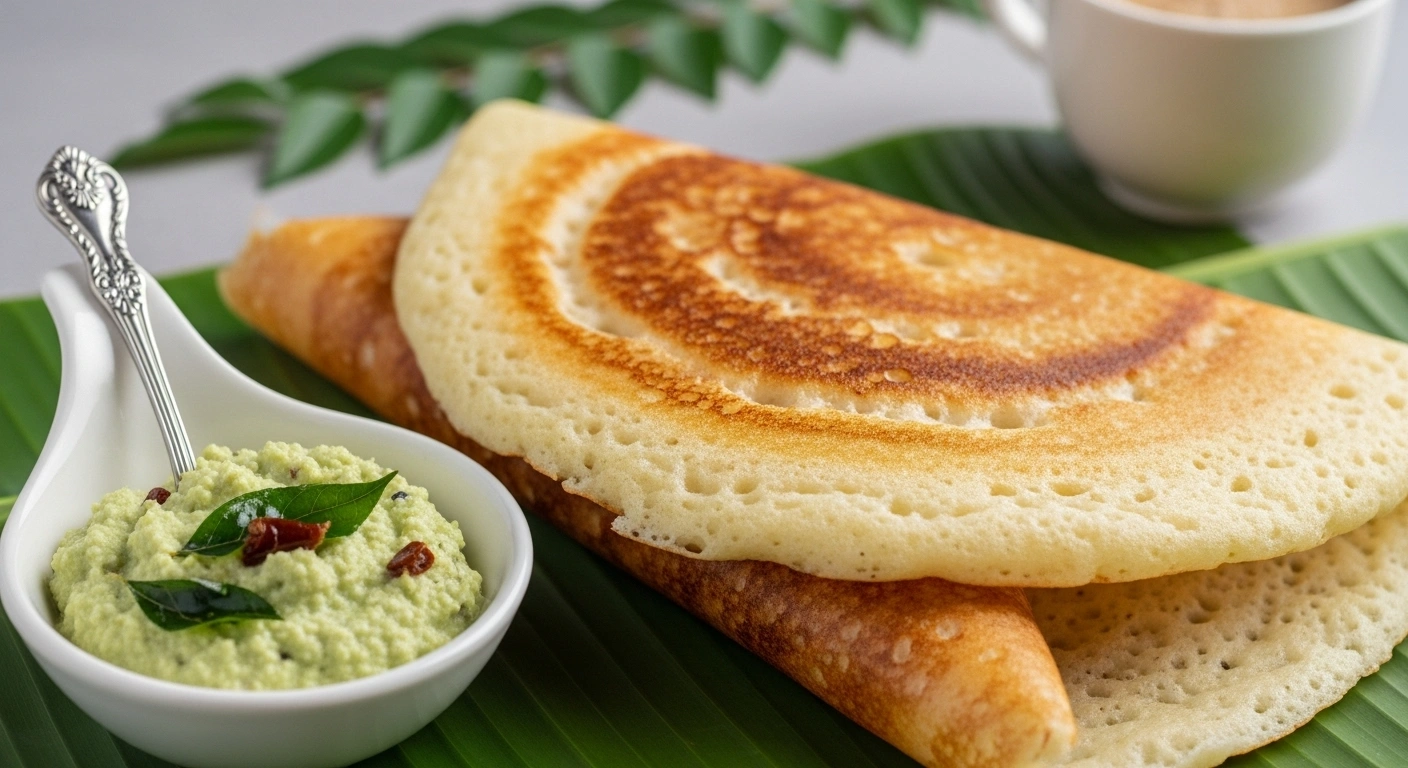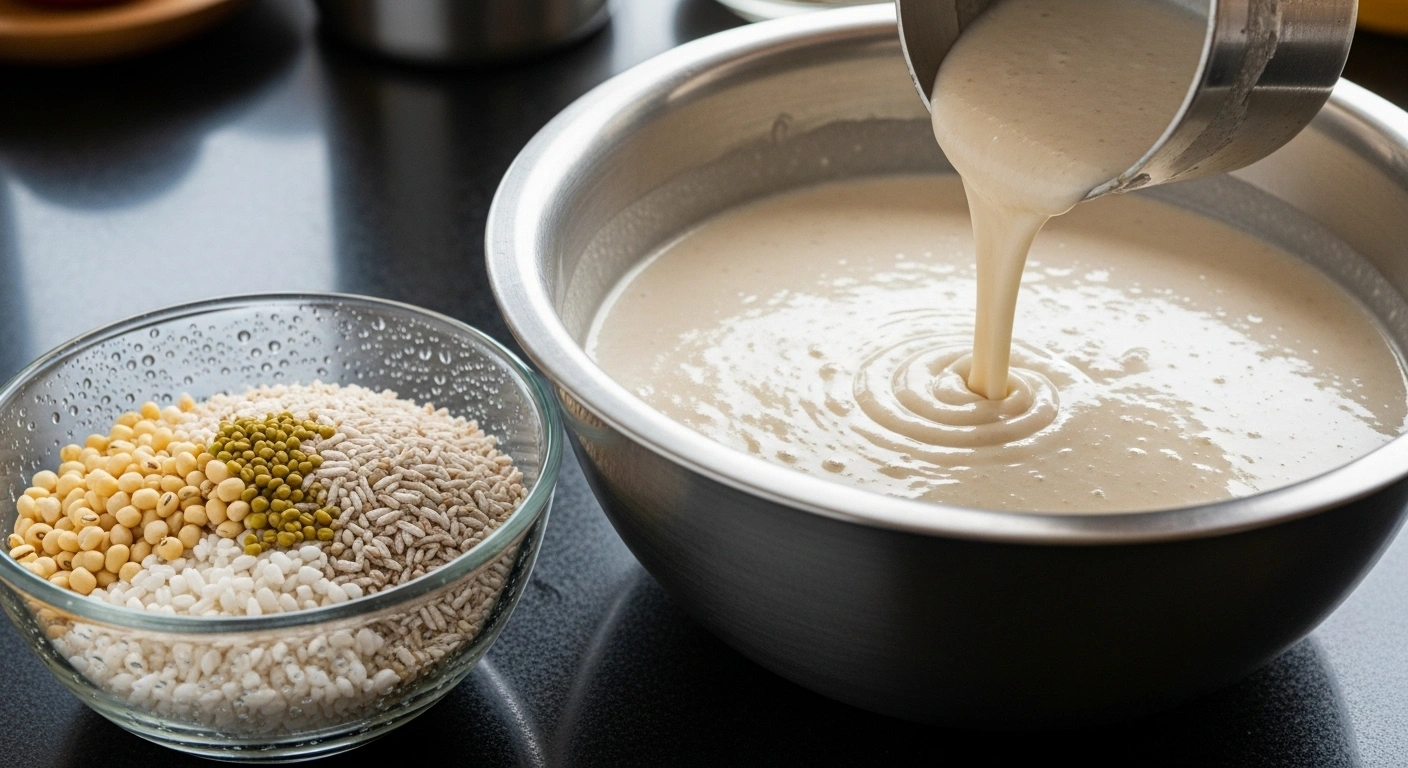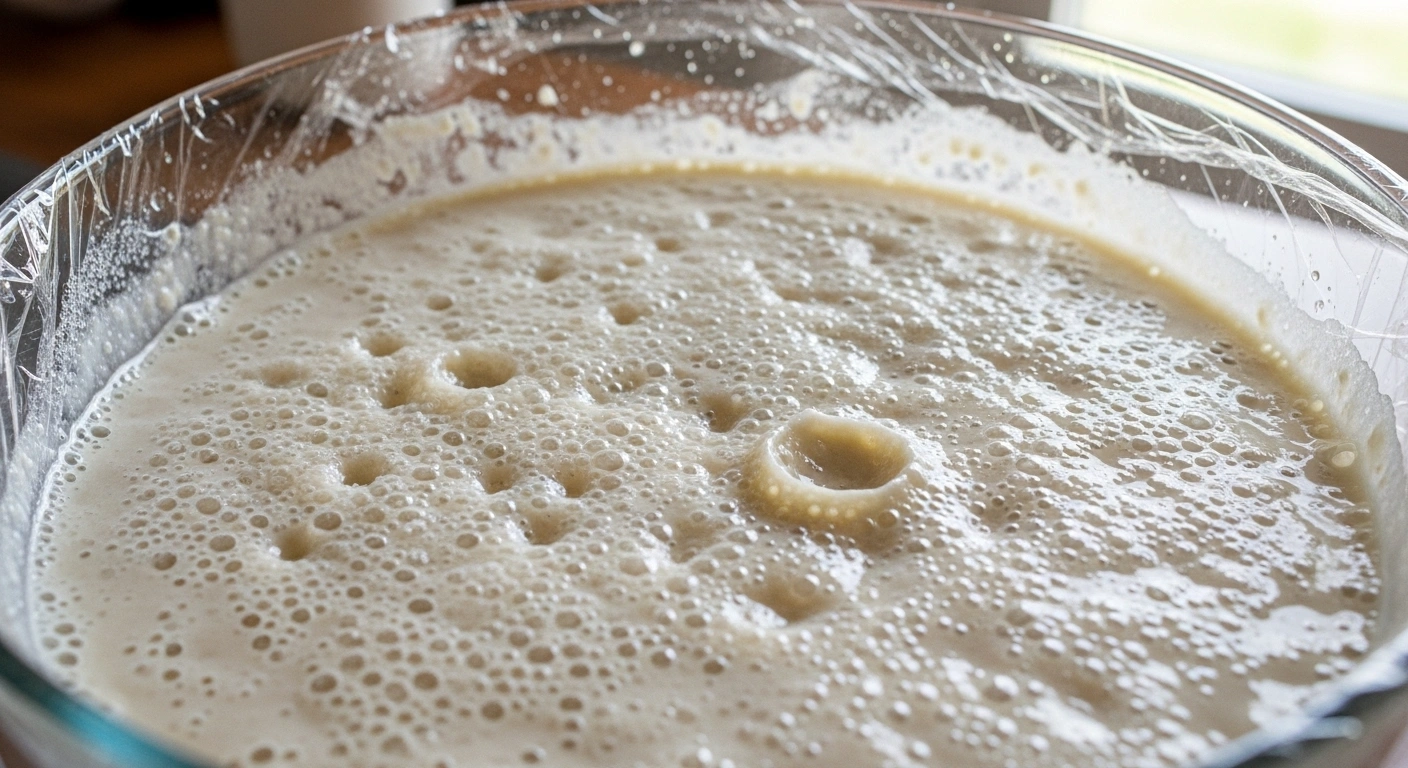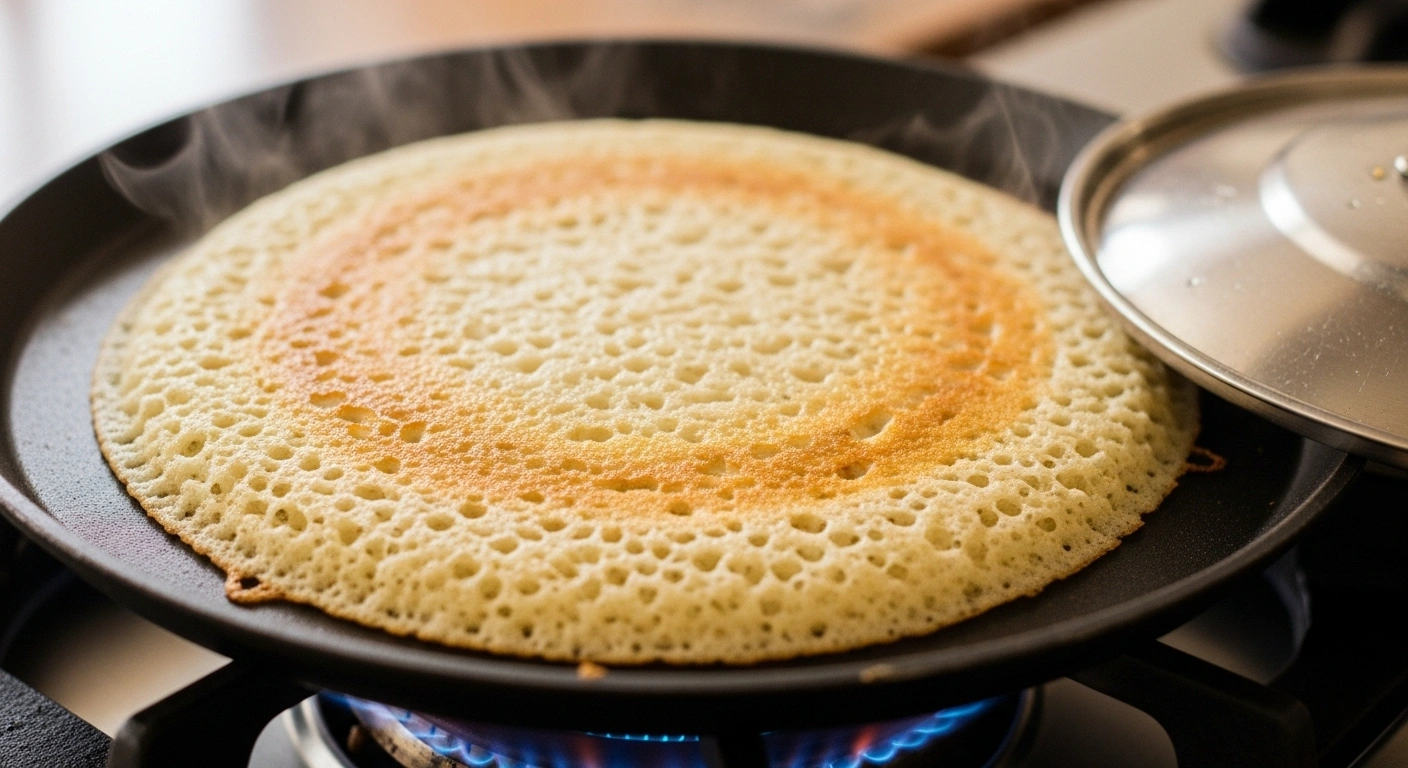Sponge Dosa and Coconut Chutney: Soft, Spongy & Flavorful

Sponge dosa is a soft, porous South Indian dosa made with a lightly fermented batter. It pairs beautifully with fresh coconut chutney, making a wholesome breakfast or light meal.

Mamta Pandey liked your Post
Team Kitchen Diaries commented on your Post
Aruna Thapar commented on your Post
Aruna Thapar liked your Post
Team Kitchen Diaries liked your Post
Team Kitchen Diaries liked your Post
Team Kitchen Diaries liked your Post
Mukti Sahay liked your Post
Rashmi Singhania commented on your Post
Aruna Thapar commented on your Post
Aruna Thapar liked your Post
Aruna Thapar commented on your Post
Aruna Thapar liked your Post
Smruti Samparna Nayak liked your Post

Sponge dosa is a soft, porous South Indian dosa made with a lightly fermented batter. It pairs beautifully with fresh coconut chutney, making a wholesome breakfast or light meal.

Sponge dosa (also called set dosa or appam-style dosa in some regions) is distinct from the usual crisp dosa. It is thick, soft, and full of pores that soak up chutney or sambar. The batter is prepared by soaking and grinding rice, poha, and urad dal, then allowing it to ferment. Unlike paper dosa, sponge dosa is cooked on one side only, leaving the top soft and spongy while the base turns golden.
The perfect accompaniment is coconut chutney — a creamy, mildly spiced dip made by grinding coconut with roasted chana dal, green chilies, and tempered with mustard seeds and curry leaves. Together, they make a classic South Indian breakfast that is filling, nutritious, and comforting.
This dish is also diabetic- and kid-friendly since it is steamed and light, not deep-fried. The softness of sponge dosa makes it easy to digest, while coconut chutney adds freshness and healthy fats.
Soak & Grind Batter
Wash rice, urad dal, poha, and fenugreek seeds. Soak for 6 hours. Grind with enough water to a smooth, thick batter.

Ferment
Transfer batter to a bowl. Add salt, cover, and ferment 6–8 hours until bubbly.

Cook Sponge Dosa
Heat a dosa tava or non-stick pan. Pour a ladle of batter and spread lightly (thicker than regular dosa). Cover with a lid and cook on medium heat until surface turns spongy with holes (don’t flip). Remove once base is golden.

Make Coconut Chutney
Grind coconut, chana dal, green chilies, ginger, salt, and water into a smooth chutney. For tempering, heat oil, add mustard seeds, curry leaves, and dry red chili. Pour over chutney.

Serve
Serve hot sponge dosas with coconut chutney on the side.

Batter should be slightly thick — not as thin as dosa, not as heavy as idli.
Always ferment in a warm place for good rise and sponginess.
Don’t spread batter too thin — sponge dosa should be soft and porous.
Serve immediately; they lose fluffiness if kept long.
Add 1 tsp sugar to batter before cooking for a slightly golden color.
The batter may not have fermented enough. Ensure proper soaking and fermentation.
Poha helps softness — skipping may make dosas dense. Use cooked rice as an alternative.
Yes, just dilute slightly and ferment an extra 2–3 hours for better pores.
Sambar, tomato chutney, or potato masala also pair well.